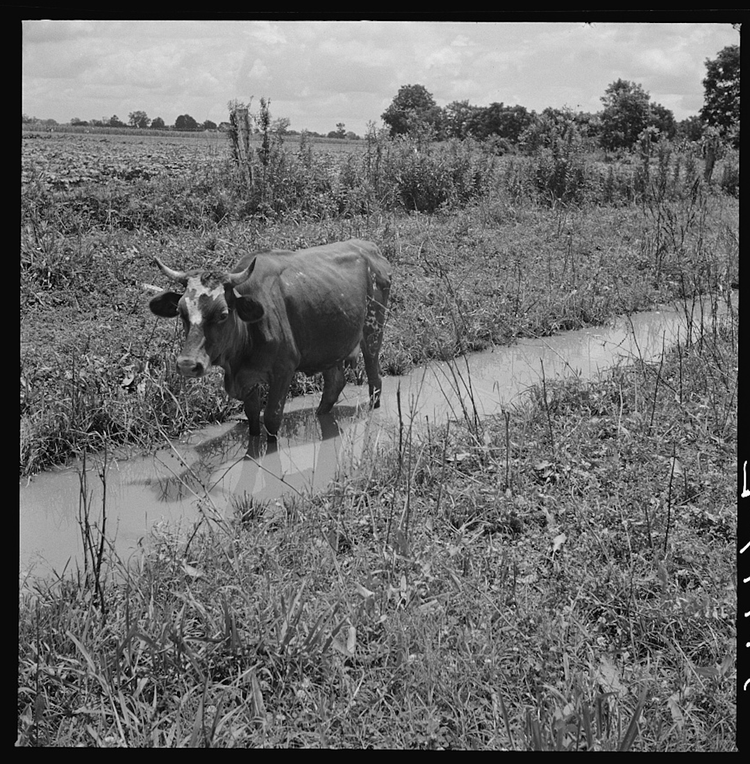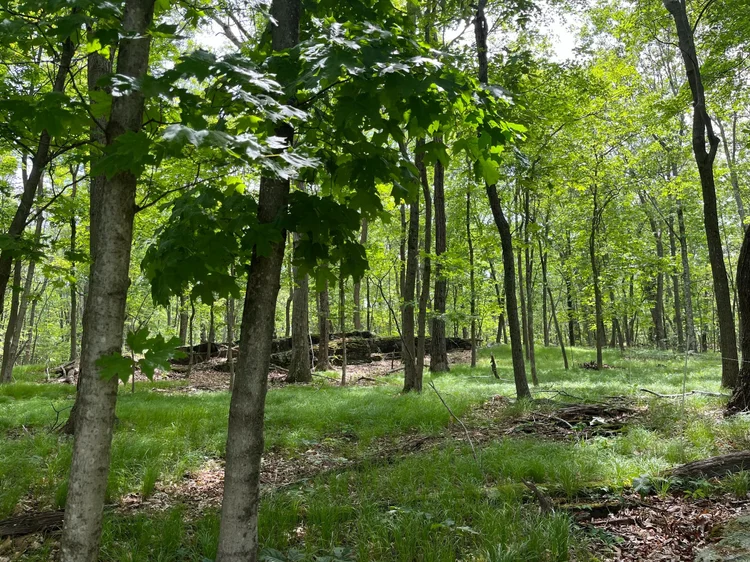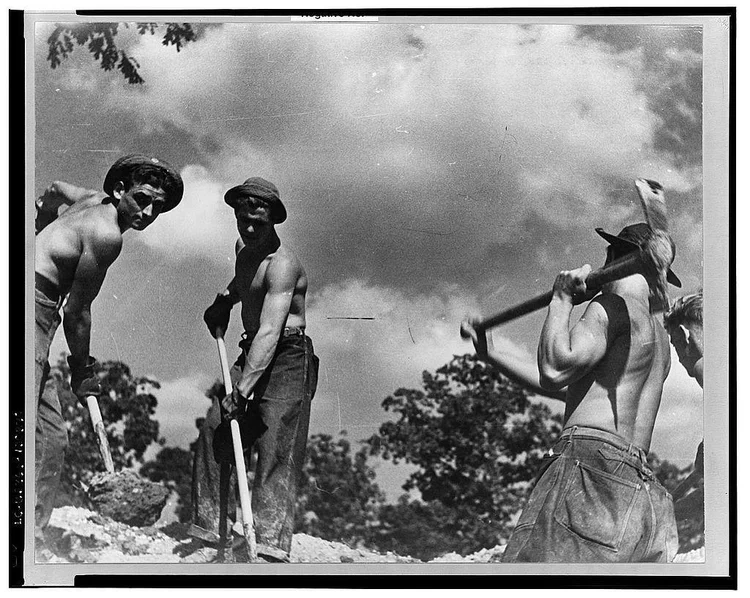Your basket is empty
Already have an account? Log in to check out faster.
Already have an account? Log in to check out faster.

As the West deals with severe droughts and the South deals with severe hurricanes and weather events, we, of the Northeast, deal with variation. I would take that over what the other regions of our nation deal with any day, but it still poses a significant obstacle for us. As farmers, what separates our business from most others is that we are dependent on the weather and the lives of living things for our income. Which, some days, makes one feel a little more on edge than others.
Over these past couple weeks, we have gone deeper into a drought, experienced some days that approached triple digits and had the great layer of Canadian smoke descend onto our farm.
The dryness started with a particularly dry spell in early May and the rain hasn’t returned with the force we need it to since. April and May are supposed to be our wet months here. That usually gives us enough juice to get us through our drier June, July, and August. So, we’re doing our best to be prepared for whatever weather will come by managing our herd as intentionally as possible and saving as much grass as we can, anticipating that we might not get much growth for months.

Cows like to cool off in the mud too. Louisiana, 1940.
This dry heat has taught me multitudes about pigs, as someone newer to raising hogs. Last week’s lesson was just how sensitive to heat these animals are. Pigs cannot sweat, so their predominate ways of cooling off involve wallowing, which is basically rolling around in cool water, turning themselves into the muddy messes they love to be. Recently, we had two pigs get very dehydrated, even though we thought they had plenty of water, food, and shade to be comfortable. Normally when things go wrong like this, it’s easy to see what caused it. This was not so obvious, forcing us to analyze things such as how far the water is from the shade, and how to insure there is enough room in the wallow for everyone to cool off. These are all things we are adapting to as a farm. They are outside of our control, but what we can control is how we manage through these challenges.
Perhaps the thing that can escape our control most easily in the natural world is fire; the thing that is on many of our minds as the smoke from Quebec and Nova Scotia descends onto the Northeast. As we watch our continental neighbors lose homes, businesses and land, the despairing question often asked is, “What can we do to stop such a thing?” Instead, I would make the case that one should be asking, “What can we do to prevent such a thing?”

Old growth forest from further upstate in 1920. Notice the clear bottom where fires wouldn’t reach the tops of trees.
Why is it that the wildfires in California and Canada are continuing to grow in proportion and frequency? I would say the reason is twofold: (1) Those forests are long overdue for a fire and, (2) We have removed the one ecological element that limits fire, ruminants.

Our farm’s silvo-pasture in progress, thanks to the introduction of ruminants.
In 1933, the state of California began its initiative to begin “fighting forest fires”, meaning anytime a naturally occurring fire began in the forest, there was now the Civilian Conservation Corps putting out the fires with water and building “fire breaks”. This organization predominated fire control, till it was absolved in 1940, when the fire control was handed over entirely to CAL Fire, the states’ fire department (Cermak, 2005). For the initial few decades of these programs, there was a general sense of success. There were, after all, less fires. But the thing none of us considered was that these forests were ecologically designed to burn. The Douglas fir, jacaranda, and boxelder trees that predominated these old growth forests were highly adapted to small fires that would commonly ignite and clear the lower canopy of the forest. While the smaller, less established trees would burn, these older trees would grow tall upper canopies that were out of reach from the brush fires, their trunks being largely immune to the surrounding blaze (R.F. Wagle, 1979).

The Civilian Conservation Corps, also known as the CCC boys, was an initiative that started during FDR’s presidency in 1933.
What we created when we started putting out forest fires and, simultaneously, logging the large trees of the California forests, was a perfect recipe for massive destructive fires that could span thousands to millions of acres at a time. These new, smaller growth trees are now growing in near the canopy, while the brush also continues to grow since it hasn’t been lit for decades, bringing them to similar heights. All it takes is for a fire to ignite, which doesn’t take much, and now the entire forest, trees included, will burn at a rate that no amount of human force can limit. This is the problem with forest fire management. And it’s a hole we have dug ourselves deeper into overtime.
People have long acknowledged the benefits of forest fires on an ecosystem. In fact, the indigenous people of these regions of the world would ignite such fires in order to encourage the productivity of the forest. Upon doing this, the lower canopy would “reboot”, in a sense, causing an explosion of forages to feed the native sheep, elk and deer, who would, in turn, feed these people groups. The ruminants would naturally keep the brush at bay and, thus, prevent more larger and spontaneous forest fires rom occurring.

There is a current movement to put back in what has long been left out. In California today, there are goat crews being introduced into these habitats. By eating the brush, they allow the tree canopy to rise while, simultaneously, bringing in moisture that naturally comes with any animal herd: urine and manure. This approach may seem contrary to the preservationist mindset, that we should just “leave the natural world alone”. Instead, these are people using the force of animal impact to regenerate this ecosystem to its historical state, all the while creating amazing nutritious food as a byproduct of this land management.
The impressive thing about this land regeneration method is that it is working— with results we have to back it up, as seen in a recent news coverage. This is no longer just a theory. We have data and evidence to show what works in these scenarios.

As smoke descends onto our state, maybe it’s a wake up call for us to realize that our approach to environmental solutions over the past 100 years have caused nothing but damage. We need to think smaller, at the level in which these systems operate. Not the one million acre level, but the 100 acre level. Weather, fire and the whims of the natural world are often perceived as random, considering ourselves as victims to it. I would say we have our paradigm backwards. As quoted above, Allan Savory once said, “It is not drought that causes erosion but erosion that causes drought”, meaning depleted and overworked soils that don’t have the consistent input of animal manures are subject to erosion and cannot hold water. All it takes is a mild lack of rain to create a drought and nothing grows because no moisture can be retained. I would expound on this concept to say that it is not climate change that causes disordered ecology, but disordered and improperly managed land that causes a climate problem. The former justifies legislative measure to “limit emissions” through broad sweeping policies, the latter informs us each to make choices in our own radius of responsibility.
There are a number of things we can do as a farm to be prepared for the unpredictable and to expect the unexpected, whilst creating a robust habitat for our livestock and wildlife alike. Some, but not all, include: always moving animals, stocking at a levels where we are always prepared for drought, and using our eyes to observe our management’s impact on our ecosystem. Perhaps the biggest most important asset in being good stewards is recognizing our smallness— our lack of true understanding of the magnificent and infinitely complex world in front of us, and realizing that most of the answers can be found in the designs and principles that have thousands of years of efficacy behind them.
If you ever have any questions, want to chat, or are interested in seeing our operation first hand, please don’t hesitate to give us a call or drop us an email!
Bennett & the Northaven Pastures team
|
Annotations: Cermak, Robert W. Fire in the forest: a history of forest fire control on the National Forests in California, 1898-1956. Usda/Usda Forest Svc, 2005. R. F. Wagle , Thomas W. Eakle, A Controlled Burn Reduces the Impact of a Subsequent Wildfire in a Ponderosa Pine Vegetation Type, Forest Science, Volume 25, Issue 1, March 1979, Pages 123–129, https://doi.org/10.1093/forestscience/25.1.123. |